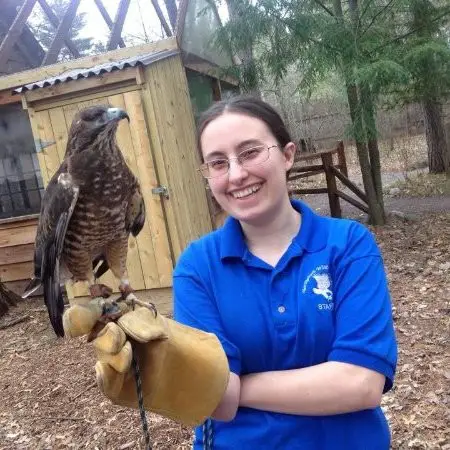Imagine you are a fish pond owner seeking advice on protecting your prized fish from potential predators. One common concern is whether hawks pose a threat to your fish. This leads to the question: Do hawks eat fish? As a bird enthusiast and someone who values the welfare of your aquatic pets, it’s crucial to understand the behavior of these birds of prey and how it might impact your fish pond. Let’s delve into this intriguing aspect of hawk behavior and explore practical solutions to safeguard your fish.
Do Hawks Eat Ducks?
Do hawks eat fish?
Yes, hawks do eat fish. Interestingly, some species of hawks do indeed eat fish. When their typical prey becomes scarce, hawks, including the red-shouldered hawk, red-tailed hawk, and Cooper’s hawk, will turn to fish as an alternative food source. They are skilled hunters and can catch fish from bodies of water or the surface.
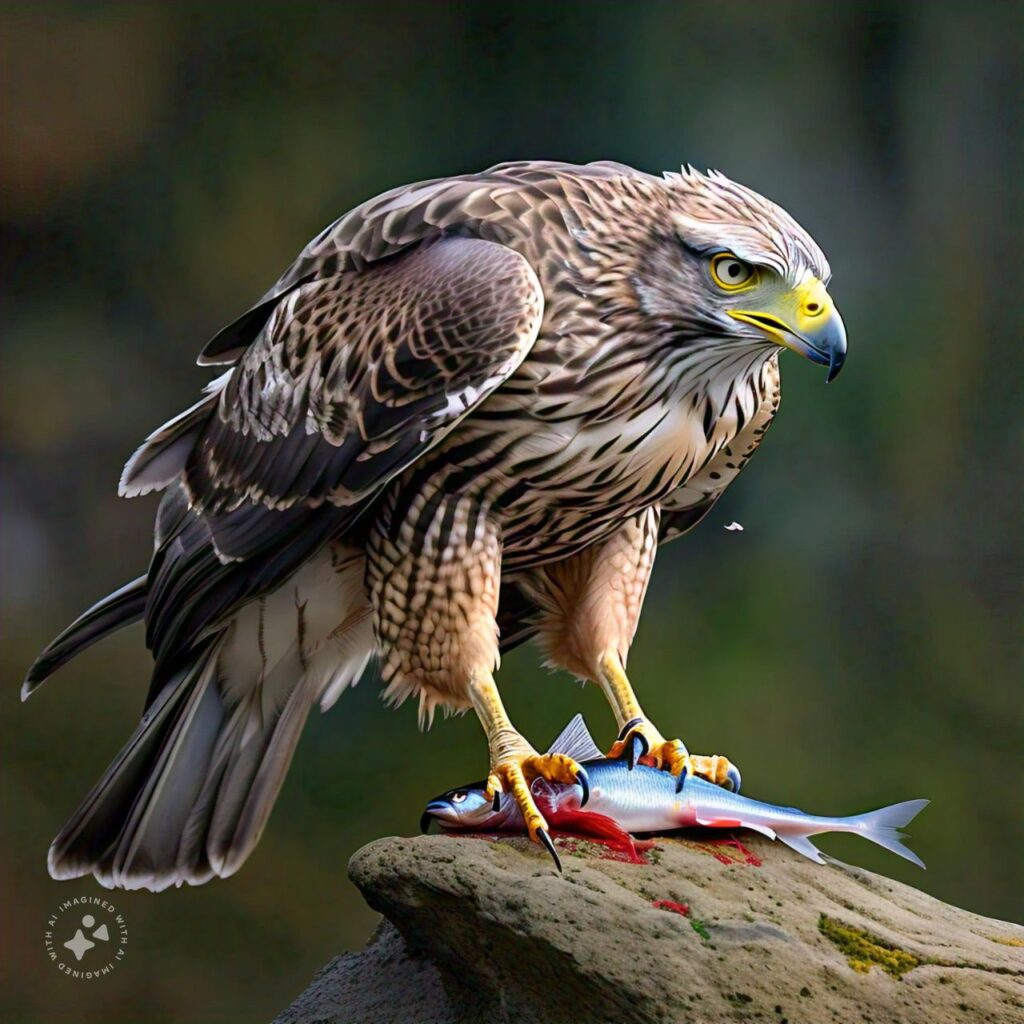
Hawks that hunt fish typically have adaptations that aid in this behavior. For instance, they may have sharp nails and excellent vision, which are beneficial for spotting and catching fish. Their hunting technique might involve swooping down from above to snatch fish from the water or catching them near the surface.
Types of Fish Consumed by Hawks
Hawks, particularly ospreys and certain other species, primarily prey on fish as a significant part of their diet. The specific types of fish they consume can vary based on factors like habitat and availability.
Freshwater Fish
In freshwater habitats such as lakes, rivers, and ponds, hawks often target fish like trout, bass, perch, catfish, and carp. These fish species are common in many freshwater environments and provide a good source of nutrition for hawks.
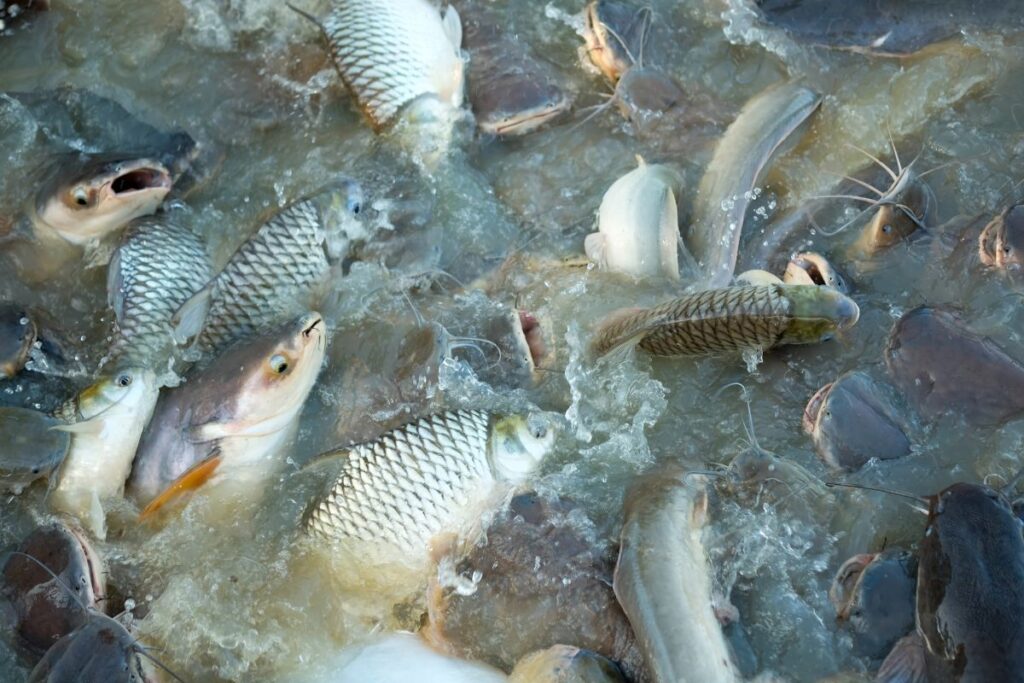
Saltwater Fish
Along coastal areas and estuaries, hawks like ospreys are known to hunt saltwater fish. This includes mullet, flounder, herring, and sea bass species. Ospreys are particularly adept at diving into coastal waters to catch these fish.
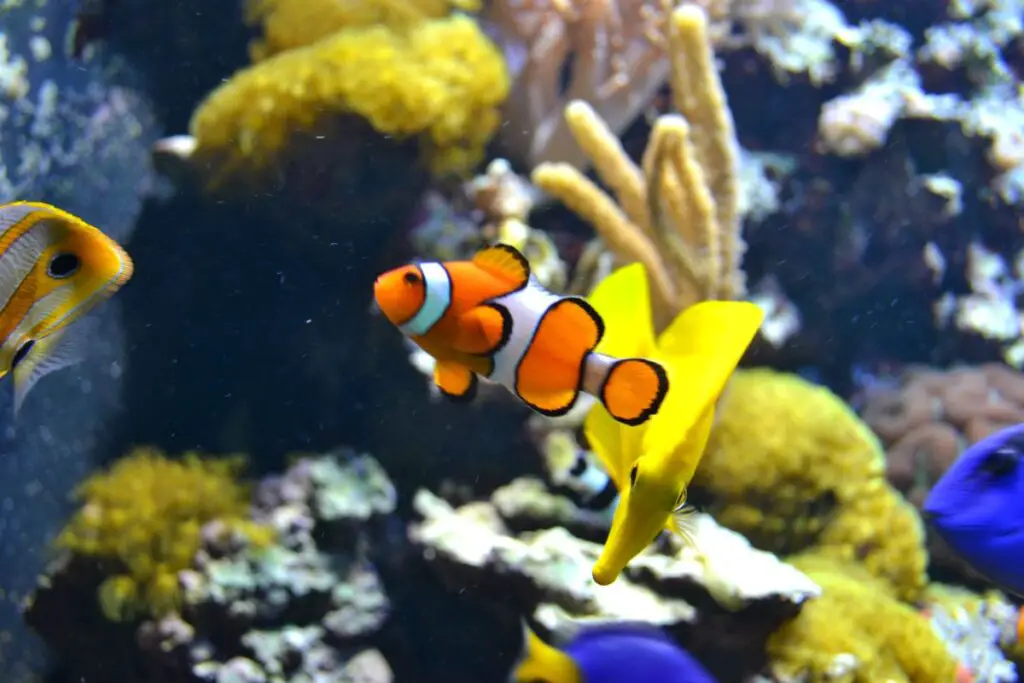
Fish Size and Accessibility
The size of a fish hawk target can vary based on the size and strength of the hawk itself. Larger hawks, such as ospreys, can handle relatively larger fish than smaller hawk species. Hawks generally prefer fish that are easily accessible near the water’s surface, making them easier to catch during flight or from perches.
Hunting Techniques
Hawks employ different hunting techniques to catch fish. Ospreys are well-known for their spectacular dives into the water, using their sharp talons to snatch fish near the surface. Other hawks might employ different strategies, such as skimming over water bodies or waiting near the shore for an opportunity to strike.
Seasonal Variations
The types of fish consumed by hawks can also vary seasonally. During certain times of the year, specific fish species might be more abundant or easier to catch, influencing the hawk’s diet accordingly.
Do Hawks Catch Fish Out Of Ponds?
Certainly! Hawks are known to catch fish not only from natural bodies of water like rivers, lakes, and oceans but also from man-made ponds. When hunting near ponds, hawks, particularly species like the osprey, use their sharp eyesight to spot fish near the surface. They then swoop down swiftly, extending their paws to grasp the fish from the water.
Ponds can provide hawks with a consistent source of prey, especially if the water is clear and the fish are visible. This hunting behavior demonstrates the adaptability of hawks to diverse environments where suitable food sources are available. Therefore, it’s not uncommon for hawks to target fish in ponds as part of their diet, especially when other food options are scarce or when they are nesting nearby.
Do Hawks Eat Deer?
How do hawks kill fish?
Hawks, particularly ospreys, have a distinctive hunting technique adapted specifically for catching fish.
Diving Strategy
When hunting for fish, hawks, particularly ospreys, utilize a remarkable diving strategy. They soar above bodies of water, typically hovering at moderate heights, scouting for fish near the surface. Once a suitable target is spotted, the hawk will initiate a steep dive, using its keen eyesight to pinpoint the fish’s location in the water.
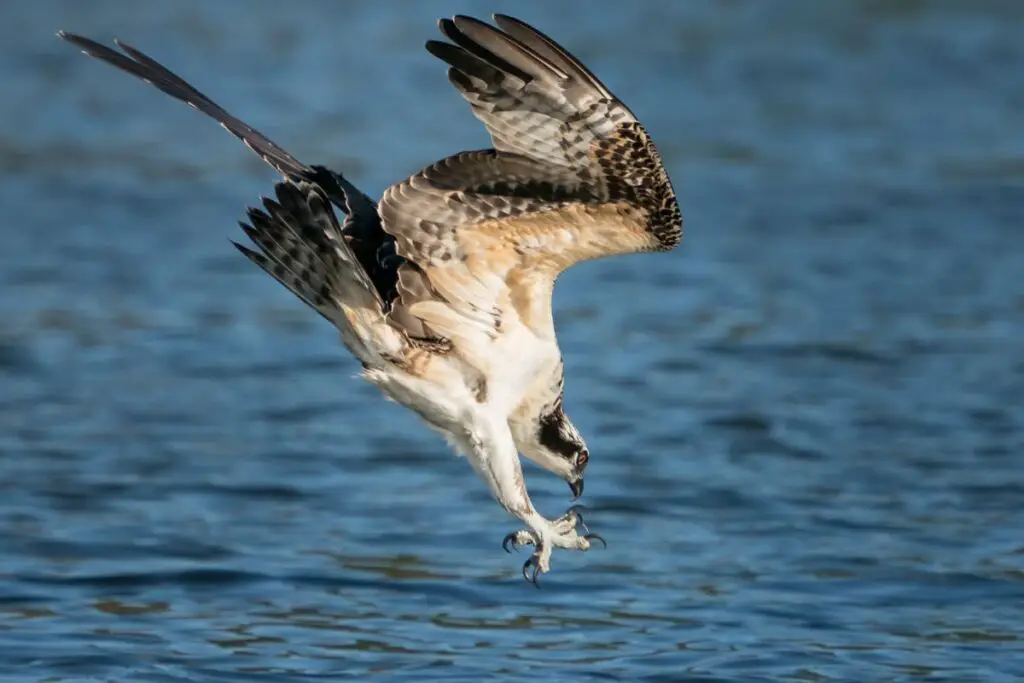
Clutching with Talons
As the hawk plunges into the water, it extends its legs and stretches its sharp talons forward. This action allows the bird to swiftly and precisely grab hold of the fish. Ospreys possess unique reversible outer toes and barbed pads on their feet, which aid in gripping slippery prey underwater.

Lifting Out of Water
Following a successful strike, the hawk swiftly emerges from the water, employing powerful wingbeats to ascend with its catch. Hawks are incredibly strong flyers, capable of carrying fish that may be as large as themselves.
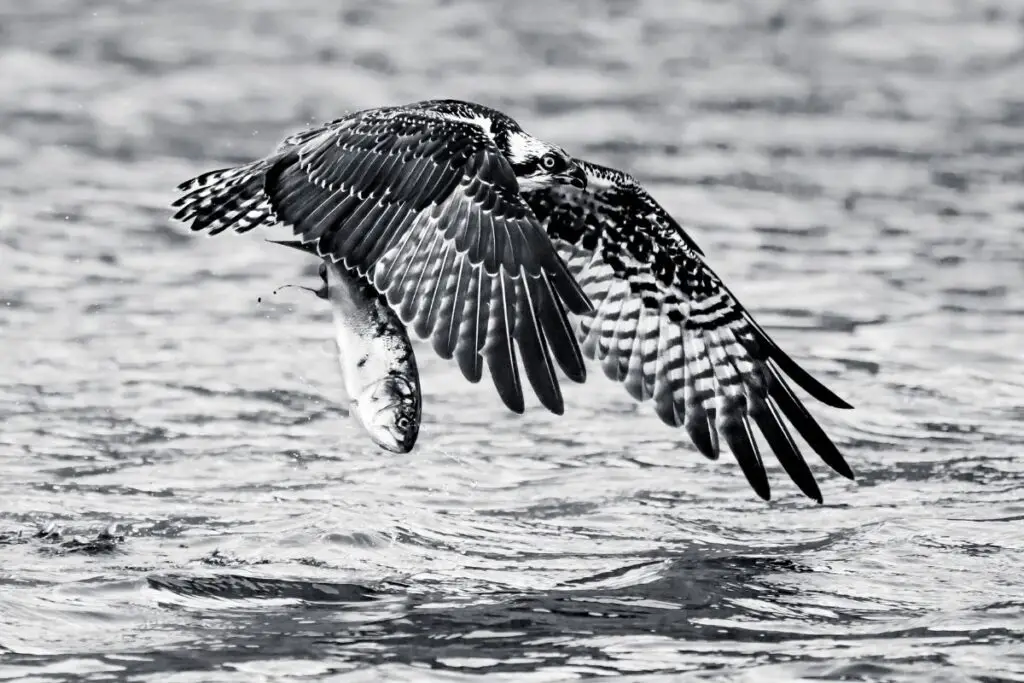
Consuming the Prey
Once the hawk has secured its catch and returned to a safe location, it will consume the fish. Hawks typically tear into the prey using their sharp beaks, and they may consume the entire fish or carry leftovers to a perch for later consumption.
What measures can I take to safeguard my pond fish from hawks?
Protecting your pond fish from hawks requires some strategic measures to deter these birds of prey. Here are several effective methods:
Pond Covering
Covering your pond with sturdy netting or wire mesh is a highly effective way to prevent hawks from accessing your fish. Ensure the netting is tightly secured around the perimeter of the pond to prevent gaps where hawks could reach through. The netting should be strong enough to withstand the weight of a diving bird without collapsing into the water. Choose a material that is durable and resistant to tearing, and regularly inspect and maintain the netting to ensure its effectiveness.
Create Shelters
Introducing shelters or refuges within the pond provides fish with hiding spots to escape from predators like hawks. These shelters can be natural (such as floating plants or submerged logs), or purpose-built structures like fish hide made from PVC pipes or ceramic pots. Place these shelters strategically around the pond to maximize their effectiveness in providing safe zones for your fish.
Increase Surrounding Vegetation
Strategic planting of tall shrubs or trees around the pond can create a natural cover that obstructs hawks’ line of sight. Dense vegetation along the pond’s edge makes it more challenging for birds of prey to spot and target fish. Choose plants suitable for your climate and pond environment, and regularly maintain the vegetation to ensure it remains effective as a deterrent.
Use Scare Tactics
Scare tactics aim to deter hawks by creating an environment that is perceived as unsafe or threatening. Reflective objects like old CDs or mirrors can confuse and deter birds with sudden flashes of light. Motion-activated sprinklers startle hawks with unexpected bursts of water. Scarecrows or decoy predators like plastic owls can also create the illusion of a dangerous area. Rotate or alternate these tactics regularly to prevent hawks from becoming accustomed to them.
Install Fencing
Installing a low-profile fence around the pond provides a physical barrier that hawks cannot easily overcome. Use wire or mesh fencing that is at least 4-5 feet high to prevent hawks from hopping over. Ensure the fencing is securely anchored to the ground to prevent birds from slipping underneath. Periodically check the fencing for any signs of damage or weaknesses that could undermine its effectiveness.
Limit Feeding in Open Areas
Feeding fish in open areas of the pond makes them more vulnerable to aerial predators like hawks. Instead, designate feeding stations with overhead covers or floating platforms where fish can safely gather to eat. This minimizes the time fish spend in exposed areas, reducing the risk of predation.
Deterrent Devices
Audible deterrents like ultrasonic devices emit high-frequency sounds that are unpleasant to hawks and may drive them away from the vicinity of the pond. Wind chimes produce random noises that disrupt the quiet environment, making it less appealing to predatory birds. Experiment with different types of deterrent devices to find which ones are most effective in your specific location.
Maintain Vigilance
Regularly monitor the area around your pond for signs of hawks or other predatory birds. Familiarize yourself with their behavior patterns and nesting sites to anticipate potential threats. Being vigilant allows you to take immediate action, such as activating scare tactics or reinforcing protective measures, to safeguard your pond fish.
Factors That Affect Hawks’ Fish Consumption
Hawks, particularly species like the osprey that have a specialized diet, including fish, are influenced by several factors when it comes to their consumption of fish. Understanding these factors can provide insights into their behavior and habitat preferences.
Habitat and Location
The availability of fish strongly depends on the habitat and geographical location where hawks reside. Hawks that primarily consume fish are often found near water bodies such as rivers, lakes, marshes, and coastal areas. These habitats provide a consistent and accessible source of fish for hunting.
Fish Abundance and Diversity
The abundance and diversity of fish species in a particular area significantly impact a hawk’s fish consumption. Hawks are more likely to frequent locations with plentiful fish stocks, which increases their hunting success and overall food intake. Additionally, diverse fish populations offer hawks a varied diet.
Seasonal Variation
Seasonal changes affect fish behavior and availability, consequently influencing hawks’ feeding patterns. During warmer months, fish are more active near the surface, making them easier targets for hawks. In colder months, fish may migrate or become less active, altering hawks’ hunting dynamics.
Water Clarity and Depth
Water clarity and depth influence how effectively hawks can hunt for fish. Clear water allows hawks to spot their prey from above, facilitating successful dives. Shallow waters are preferred as they enable hawks to access fish close to the surface, minimizing the energy expended during hunting.
Environmental Conditions
Environmental factors such as weather conditions and water quality impact fish populations, consequently affecting hawk feeding behaviors. Extreme weather events like storms or droughts can disrupt fish habitats and migration patterns, temporarily altering the availability of fish for hawks.
Competitive Interactions
Hawks may face competition from other predators, including eagles, herons, and humans, for access to fish. This competition can influence where and when hawks hunt for fish and may impact their overall consumption rates.
Foraging Efficiency
The foraging efficiency of hawks plays a role in their fish consumption. Hawks with better hunting skills and physical adaptations, such as the osprey’s specialized talons and vision, are more successful at catching fish. Efficiency in hunting directly correlates with the amount of fish consumed by hawks.
Hunting Techniques for Capturing Fish
Hunting fish requires specific techniques tailored to the environment and behavior of aquatic prey. Various animals, including birds like hawks, employ unique strategies to capture fish effectively.
Adaptations for Fishing
Hawks, like the osprey, possess unique adaptations that make them well-suited for catching fish. They have sharp, curved talons that can firmly grasp slippery fish, ensuring a secure hold during flight. Additionally, their keen eyesight allows them to spot fish swimming beneath the water’s surface from great heights. This combination of physical adaptations and sensory capabilities enables hawks to effectively target and capture fish.
Locating Prey
Hawks primarily hunt over bodies of water where fish are prevalent. They spend considerable time soaring high in the sky, using their excellent vision to scan the water below for signs of movement. This aerial surveillance helps them pinpoint the location of potential prey, allowing them to focus their hunting efforts in productive areas.
The Dive
When a hawk identifies a fish, it executes a rapid and precise dive towards the water. This diving technique is critical to its hunting strategy, enabling it to swiftly close the distance and seize its target.
Underwater Capture
Upon hitting the water, hawks use their strong paws to snatch the fish. They may briefly swim to the surface if needed, leveraging their streamlined bodies to maneuver effectively underwater. The hawk’s talons provide a secure grip on the fish, preventing it from escaping.
Carrying and Consumption
After capturing a fish, the hawk carries it in its talons back to a perch, such as a tree branch or nest. Here, the bird will consume its catch, tearing it into smaller pieces with its sharp beak for consumption.
Impact of Fish Consumption on Eco-System
Fish consumption can have significant impacts on aquatic ecosystems, affecting various components of these environments. Understanding these impacts is crucial for sustainable management and conservation efforts.
Overfishing
One of the primary concerns related to fish consumption is overfishing. Overfishing occurs when fish stocks are harvested at a rate that exceeds their ability to replenish naturally. This can lead to declines in fish populations, disrupting the balance within the ecosystem. Overfishing not only affects the targeted fish species but also has ripple effects on other species that depend on them for food.
Habitat Destruction
Some fishing methods, like bottom trawling and dredging, can destroy habitats. These methods can damage seafloor habitats like coral reefs, seagrass beds, and sponge fields, which serve as essential habitats for various marine species. Habitat destruction can result in a loss of biodiversity and negatively impact the overall health of the ecosystem.
Bycatch
Bycatch refers to the unintentional capture of non-target species during fishing operations. This often includes species like dolphins, sea turtles, seabirds, and juvenile fish. Bycatch can lead to declines in these non-target species and disrupt food webs within the ecosystem. Implementing bycatch reduction techniques and using selective fishing gear can help minimize this impact.
Alteration of Food Webs
Removing certain fish species from the ecosystem can alter the structure of food webs. Predatory fish play important roles in controlling populations of prey species. When predators are overfished, prey populations can increase unchecked, leading to imbalances in the ecosystem. This can have cascading effects on other species and ecosystem dynamics.
Pollution
Fish consumption can indirectly contribute to the pollution of aquatic ecosystems. For example, fish farming (aquaculture) often involves the use of antibiotics, pesticides, and excess nutrients, which can enter surrounding waters and impact water quality. Pollution from urban and industrial sources can also affect aquatic ecosystems, posing threats to fish populations and their habitats.
FAQ’S
What animals eat fish?
Several animals are known to eat fish, including birds like herons, kingfishers, and eagles. Many species of mammals also consume fish, such as otters and bears, especially during certain seasons. Additionally, aquatic animals like dolphins and seals are skilled fish hunters. Some reptiles like alligators and snakes also prey on fish, particularly those found in freshwater habitats. Overall, fish serve as an important food source for a diverse range of animals across different ecosystems.
Do Cooper Hawks eat fish?
Cooper’s Hawks (Accipiter cooperii) are primarily known for hunting and feeding on birds and small mammals rather than fish. They are agile woodland hunters, often observed darting through trees in pursuit of songbirds and other prey. Unlike Ospreys or other fish-eating raptors, Cooper’s Hawks do not typically include fish in their diet. Their hunting strategy is focused on capturing birds and small mammals using their speed and maneuverability in wooded environments. Therefore, fish are rare on Cooper’s Hawk’s menu.
What is a hawk’s Favourite food?
Hawks, the hero from the manga, actually loves chicken as his favorite food. This might seem surprising because Hawks himself looks like a bird and has powers related to birds. You would think he might prefer other animals with wings and feathers, but that’s not the case. Hawks enjoy chicken despite its bird-like appearance and abilities. It shows that people’s tastes can be unexpected and don’t always match what you might think.


